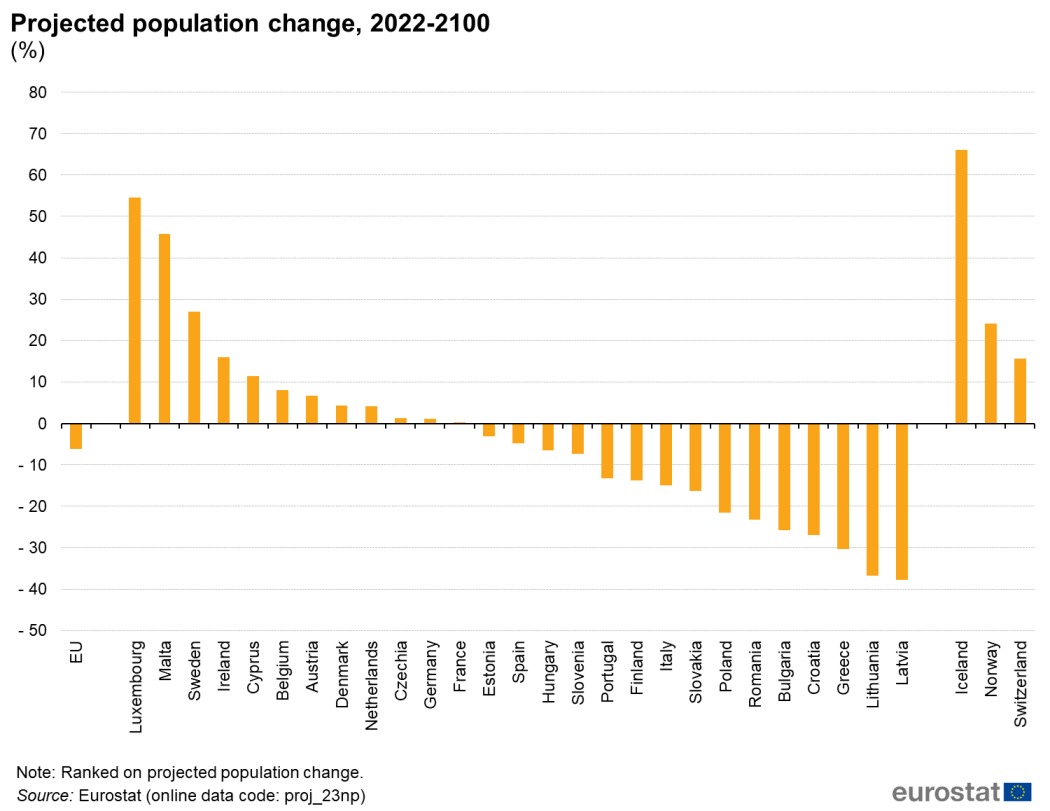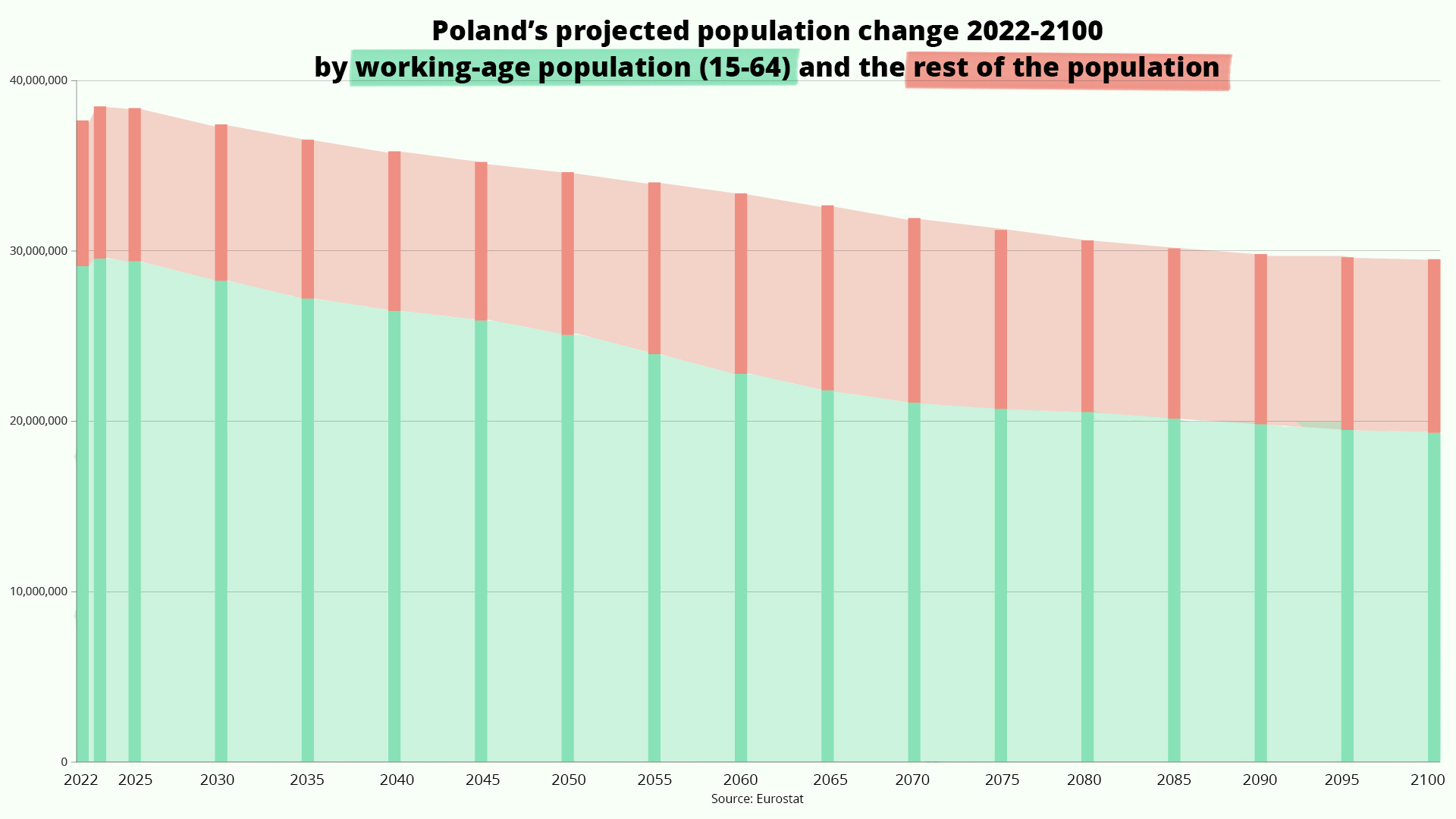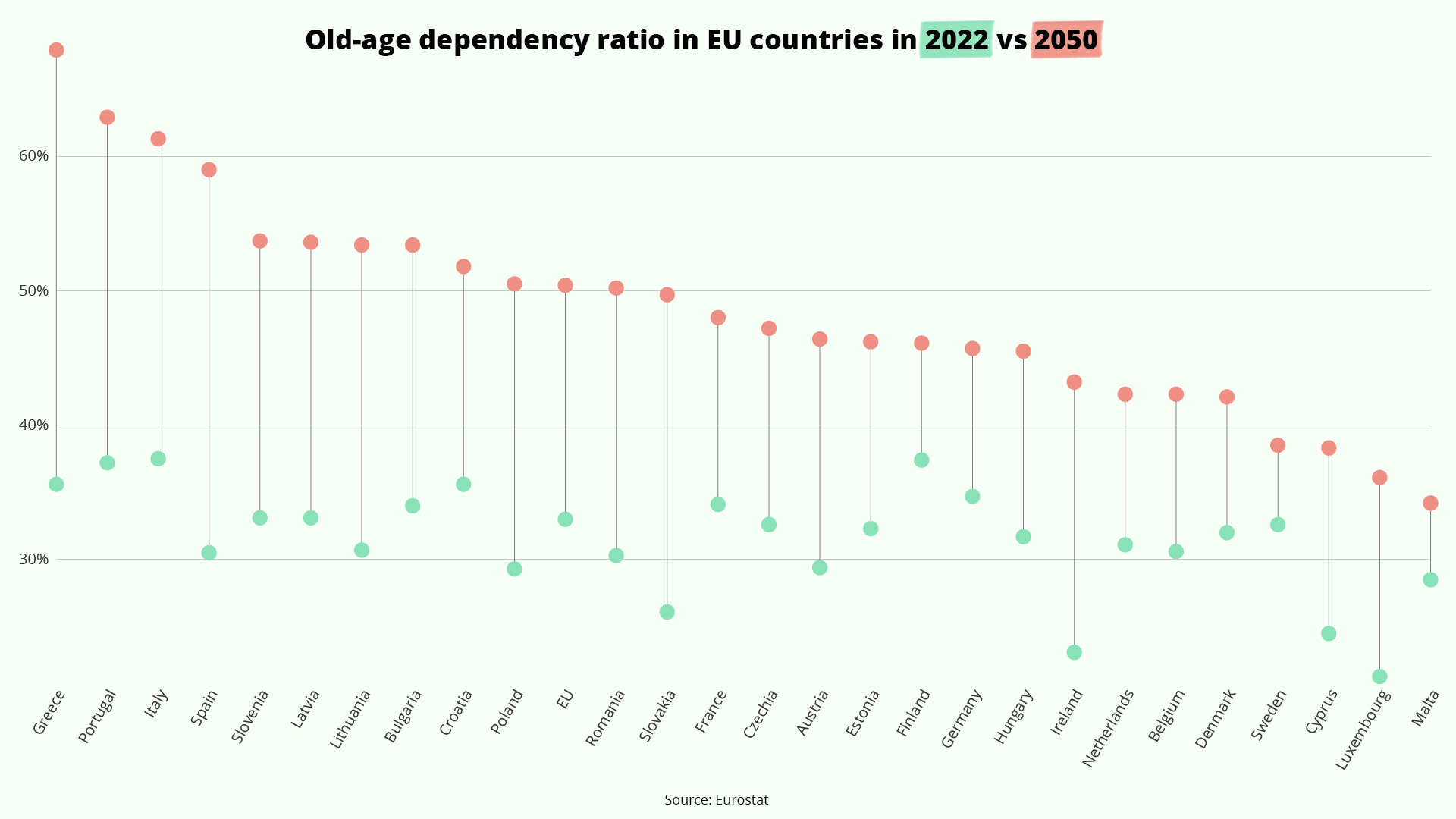Poland’s population, currently 38.5 million, is set to fall to 34.6 million by 2050 and 29.5 million by 2100, according to new Eurostat forecasts. That decline of around 23% is the seventh largest in the European Union over that period.
The predicted population drop would have been even greater were it not for an assumed net migration of 5.3 million people over that period to Poland, which currently has one of the EU’s highest immigration rates.
Meanwhile, Poland’s working-age population is set to decline by 4.5 million by 2050 and 10 million by 2100. That will result in the ratio of the elderly to the working-age population doubling over that period and rising from below the EU average to above it

Eurostat’s predictions are consistent with Poland’s recent national census, which has shown that the country’s population is ageing and shrinking. Last year, the number number of live births in Poland fell to its lowest level since the Second World War last year while the number of deaths is rising.
Although last year’s mass arrival of Ukrainian refugees boosted the population – and Poland has also for the last five years running issued more residence permits to immigrants than any other EU member state – its otherwise negative demographics are set to see further decline in coming decades.

This means that Poland, like most countries in Central and Eastern Europe, may face further demographic challenges, such as labour shortages and the overburdening of the pension system.
Eurostat’s figures show that its old-age dependency ratio – the number of those aged 65+ as a proportion of the 15-64 working-age population – will rise from below 30% in 2022 to over 50% in 2050 and 60% by 2100.
“Population ageing will likely have a considerable impact on public expenditure plans, for example, in relation to pensions, healthcare and long-term care costs,” writes Eurostat.

Andrzej Kubisiak, the deputy director of the Polish Economic Institute (PIE), a think tank, notes that the biggest changes in the number of working-age people in Poland will occur not in the current decade, but in the next three.
“Annual changes may be barely noticeable, but the process will clearly accelerate in 8-10 years’ time,” he said, adding that these changes mean that the staff shortages and recruitment difficulties reported by employers in recent years will continue and even worsen.
This means that it will be crucial to increase labour market participation, especially among the young and those over 50, writes Kubisiak.
The results of Poland's national census show that the population decline forecasted by demographers is already happening.
The challenge of building intergenerational solidarity must be embraced now to reduce inequalities and strengthen economic growthhttps://t.co/ieIL3bDVV2
— Notes from Poland 🇵🇱 (@notesfrompoland) April 1, 2022
Main image credit: Sabine van Erp / Pixabay

Alicja Ptak is senior editor at Notes from Poland and a multimedia journalist. She previously worked for Reuters.



















